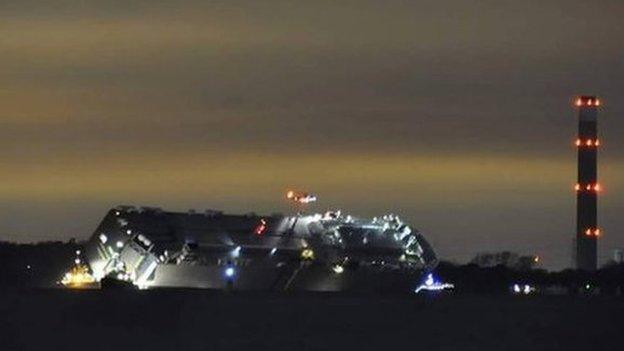Cargo ship Solent: Stricken vessel 'could be refloated'
- Published

The Hoegh Osaka is currently listing at 52 degrees on Bramble Bank
A cargo ship which is stranded in the Solent after it was deliberately run aground could be refloated on Wednesday, salvors have said.
The Hoegh Osaka ran aground off the Isle of Wight on Saturday and is listing at 52 degrees on Bramble Bank.
During a press conference, Bram Sperling, from salvors Svitzer, said conditions could be favourable for a refloat at high tide on Wednesday.
He said a decision would be made on Tuesday night.
Mr Sperling, who is leading an 18-strong team, said there was now some water inside the ship.
He said most of the cargo was still in place but some items had shifted, resulting in a "small opening in the vessel", which had since been closed.
He said "a lot of steps and difficult calculations" were involved in bringing the ship into an upright position.
A refloat was the preferred option to avoid further damage to the vessel from the sandbank, Mr Sperling added.
A second option would be to anchor it to the sandbank while plans are made to right its current position.
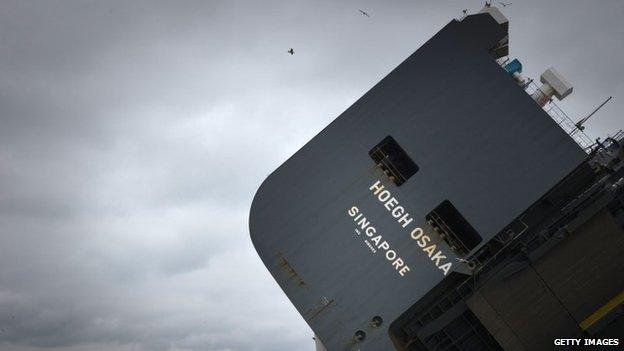
The ship is 51,000 tonnes and was only one third full
Hugh Shaw, the Secretary of State's Representative for Maritime Salvage and Intervention, said the car carrier remained in a stable condition.
"Every effort is being made to refloat the boat in a safe manner and deliver her back to the owners without any damage to the environment," he said.
He said the port of Southampton was functioning normally with no disruption to the flow of traffic, but there may be a need for a temporary closure during a refloat operation.
"We are looking at potential sites within the Solent - we're not looking at taking the vessel any great distance," Mr Shaw added.
"Our thoughts would be to get her into a safe anchorage, well away from the main shipping channels to minimise any further disruption to the port.
"She would remain in that position until we are satisfied she was stable, before any attempt to tow her back to the port of Southampton."

The cargo ship ran aground on Bramble Bank on Saturday evening
Salvage experts from Svitzer boarded the ship on Monday where they began carrying out an assessment to form a rescue plan.
Speaking at a press conference after the incident, Ingar Skiaker, chief executive of Hoegh Autoliners, said the crew deliberately ran the ship aground to avoid further damage.
There are 1,400 cars on board, including 1,200 Jaguar and Land Rover products, 65 Minis as well as 105 JCB machines.
Eric Williams, whose company Williams Shipping is working with the salvage team, said he was told the cars were well strapped down and not as badly damaged as feared.
There are also 500 tonnes of fuel on board, most of which is marine diesel oil. Experts plan to leave this safely aboard the ship for the time being, as it has been secured and poses no risk to the environment.

JCBs destined for the Middle East are among the machinery on board the stranded vessel, shown before the ship left Southampton
Two crew members out of 25 rescued by RNLI Lifeboats and the Solent Coastguard on Saturday suffered non-life threatening injuries.
Two senior officers and a pilot stayed on board before being taken ashore.
A 200m-radius (656ft) exclusion zone has been set up around the ship, external to prevent small vessels interfering with the tugs and other shipping.
A spokesman for the Maritime and Coastguard Agency said: "The salvors are continuing with their assessment and depending on the outcome of their findings....will either work to secure the ship in preparation for the expected bad weather or, if the opportunity arises, to refloat it.
"We do not expect to be in a position to confirm which of these options will happen before first light tomorrow morning."
The 51,000-tonne transporter, registered in Singapore, set sail from Southampton for Germany at about 20:20 GMT on Saturday.
The salvage operation is expected to take days, possibly weeks.
In November 2008, the Cunard liner Queen Elizabeth 2 with 1,700 passengers on board ran aground on Bramble Bank but was able to continue its journey on the rising tide after four tugs pulled it clear.
Bramble Bank is the scene of an annual cricket match between two yachting clubs when the sands are exposed in low spring tides.
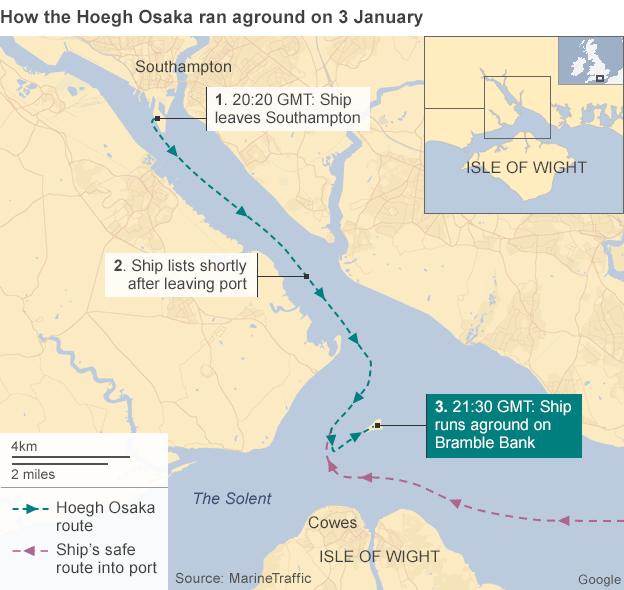
- Published5 January 2015
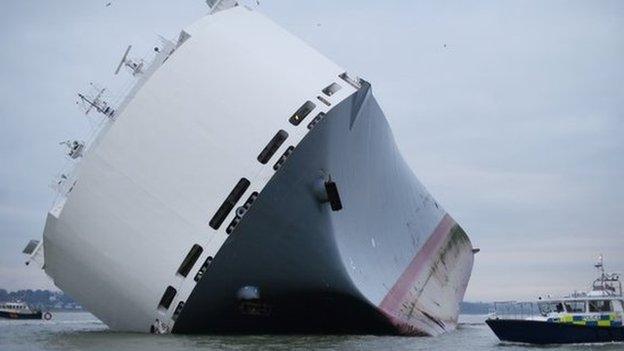
- Published5 January 2015
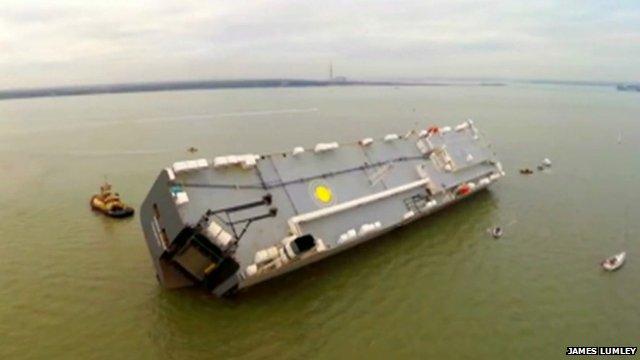
- Published4 January 2015
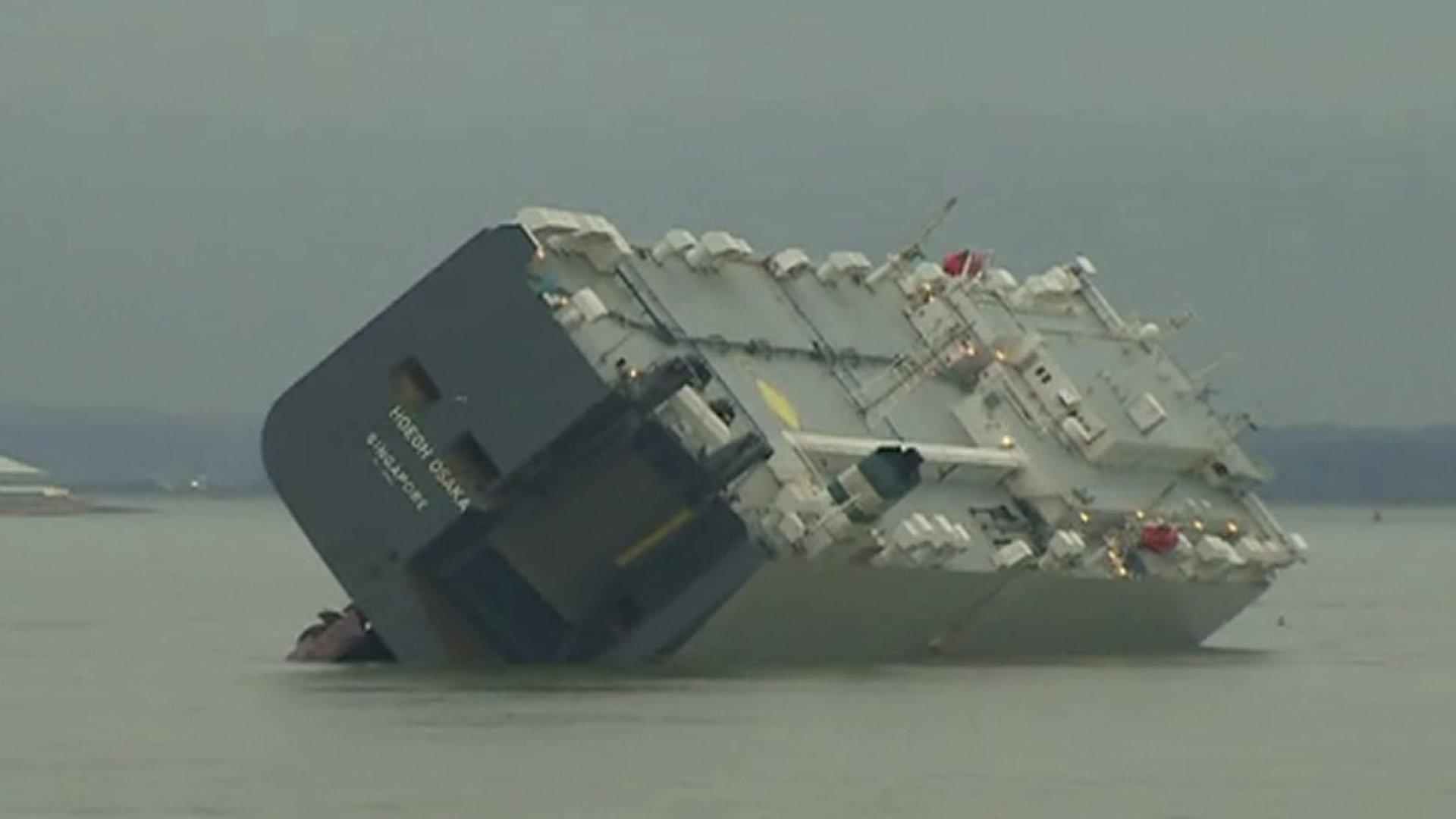
- Published4 January 2015
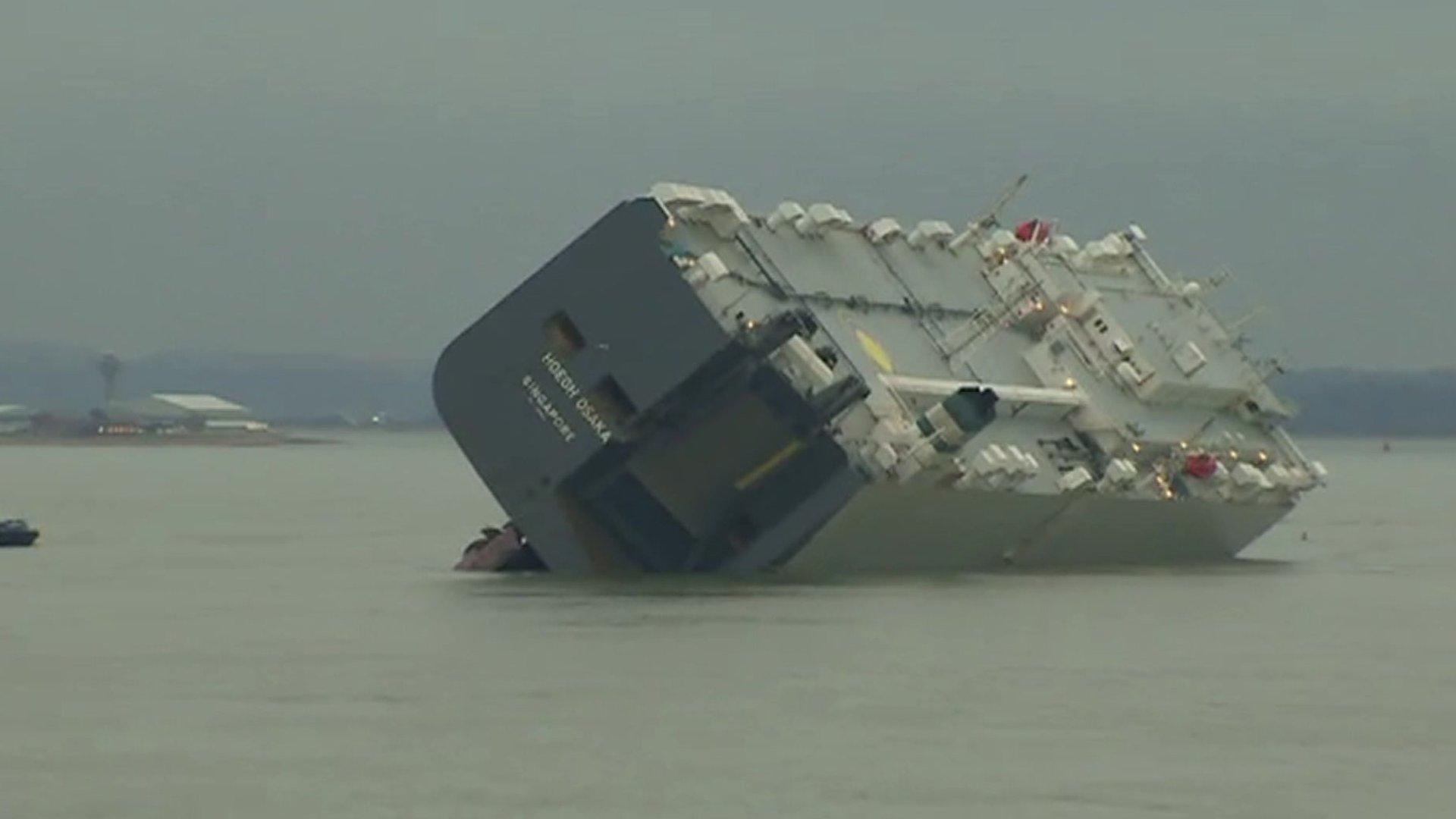
- Published4 January 2015
